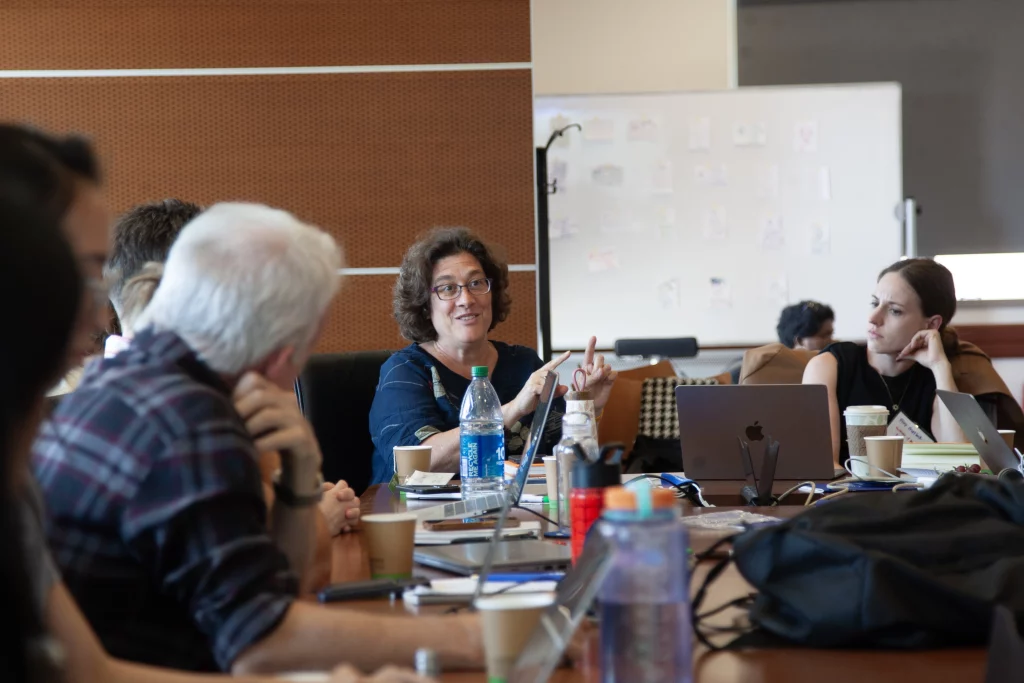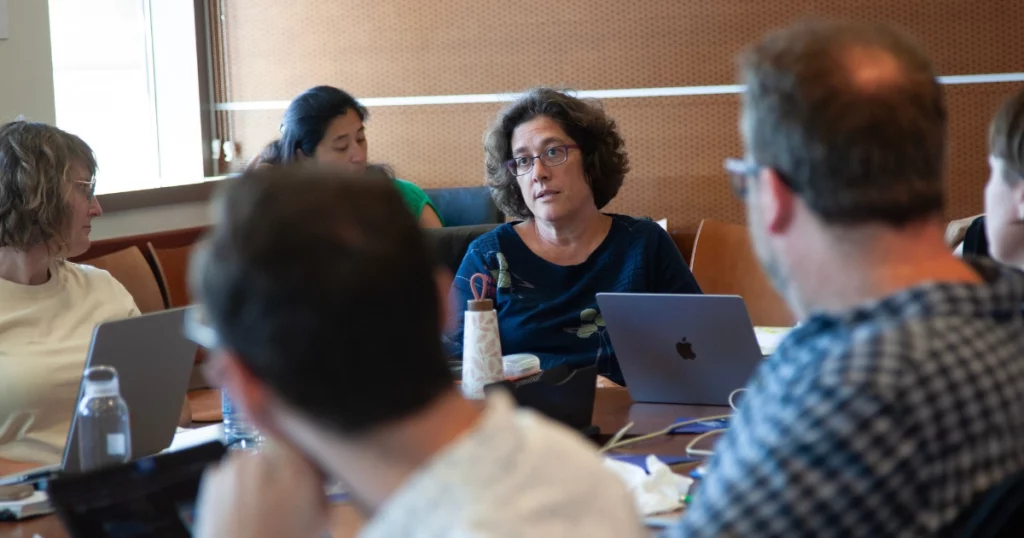The gender digital divide refers to the significant gap or inequalities between men’s and women’s access to and use of Information and communication technologies (ICTs). This gap is driven by various factors, including economic inequalities, limited access to devices, insufficient Internet connectivity, cultural barriers, and a lack of digital skills, among others. According to Sonia Jorge, Executive Director of the Global Digital Inclusion Partnership (GDIP), this divide creates major barriers for women to fully participate in the digital economy, ultimately limiting their potential as citizens, innovators, and human beings.
Jorge deepened her understanding of the digital gender gaps during her research entitled Connected Resilience: Gendered Experiences of Meaningful Connectivity through a Global Pandemic, supported by the Internet Society Foundation’s Research Grant Program. This project delves into how women, particularly during the COVID-19 pandemic, experienced and engaged with technology. The research highlights the profound costs of excluding women from digital spaces and stresses the need for equitable access to meaningful connectivity.
But what is meaningful connectivity? Jorge explains that meaningful connectivity goes beyond simply having access to the Internet. It refers to an individual’s ability to access affordable, high-speed Internet on a device that is appropriate for daily use, such as a smartphone with a 4G connection. In addition, it involves having the necessary skills to utilize digital tools effectively and exercising one’s rights online. The concept also includes ensuring that the social, economic, and cultural environment supports people in fully participating in digital spaces. Unfortunately, for many women, particularly those from marginalized communities, these elements are often lacking, exacerbating the gender digital divide.
The conversation with Jorge took place as part of the new season of our Research Program Interview Series, The Future of the Internet. This initiative is designed to engage in in-depth discussions with researchers from our community of grantees. The series aims to support the dissemination of their findings and amplify the impact of their research.
Interview with Sonia Jorge
The Internet Society Foundation: What were the objectives of your research?
Sonia Jorge: Our research had two primary objectives. The first was to quantify the cost of excluding women and girls from the digital world, helping policymakers understand the economic losses that occur when half of the population is not fully integrated into digital societies. We wanted to show the financial impact of this exclusion because when policymakers see a dollar figure attached, they tend to take action. It’s one way to bring attention to the issue.
The second objective was to explore how women, in all their diversity, experienced meaningful connectivity during the global pandemic. We wanted to understand how women and girls who had meaningful connectivity fared compared to those who didn’t. For those with access, how did it shape their experiences and their ability to benefit from the digital world? Did it help them engage more effectively as digital citizens, exercise their rights, and make decisions for themselves and their families? The research was aimed at uncovering these dynamics and highlighting how meaningful connectivity—or the lack of it—impacts women’s ability to fully participate in society as creators, thinkers, and decision-makers.
The Internet Society Foundation: What does meaningful connectivity mean?
Sonia Jorge: Meaningful connectivity is much more than simply having access to the Internet every now and then. It’s about ensuring that people can access the Internet in a frequent, reliable, and affordable way. Specifically, it means having access to a high-speed connection—at least 4G—on a device that’s appropriate for everyday use, like a smartphone. But meaningful connectivity goes beyond just the technical aspect; it’s also about whether people have the skills to use that connectivity effectively. Are they able to engage with digital content in a way that is productive for their lives?

For women, particularly, meaningful connectivity means overcoming a set of structural barriers—such as cultural, social, and economic conditions—that might limit their ability to make the most of digital opportunities. It’s not enough to just be connected; they need to be in an environment that enables them to fully utilize the digital world to their advantage. This includes being able to exercise their rights online, engage in economic activities, and participate as active citizens. For many women, especially in marginalized groups, these opportunities are restricted, which is why meaningful connectivity is a gender issue.
The Internet Society Foundation: What is the gender digital gap?
Sonia Jorge: The gender digital gap can be understood through a simple example: you’re a man interviewing me, a woman. In many parts of the world, the fact that I’m a woman would mean that I don’t have the same kind of device or Internet connectivity that you might take for granted. Due to economic differences, social norms, or a lack of infrastructure, women are often left behind in the digital space. They might not be able to afford a smartphone or a 4G connection, and if they do have access, it may not be regular or reliable. This digital divide, driven by gender, is pervasive in many regions, and it severely limits women’s opportunities to engage with technology and the broader digital economy.
The Internet Society Foundation: What is the cost of exclusion?
Sonia Jorge: The financial cost of excluding women from the digital world is staggering. In low- and middle-income countries, the research shows that this exclusion has cost over a trillion dollars in the past decade. But even more striking is the projection for the next five years. If we don’t address the gender digital divide by 2030, we stand to lose another 500 billion dollars in these same countries.
This is not just about doing what’s morally right—it’s about the economic impact on society as a whole. If we don’t make efforts to include more women, girls, and marginalized groups in the digital world, we are all worse off. The Sustainable Development Goals set for 2030 are a critical benchmark, and we’re falling behind. When people ask me about the importance of addressing this issue, I always say that I’m a less interesting person, less connected to the world, if I can’t engage with women from places like India, Nigeria, Bangladesh, or Argentina. Without the richness of their experiences, we all miss out on learning, cultural exchange, and innovation. In essence, the cost of exclusion is a loss of human potential on multiple levels—economic, social, and cultural.
The Internet Society Foundation: Does your research include recommendations for policymakers?
Sonia Jorge: Absolutely. Our report provides several recommendations for policymakers, and we don’t just present abstract ideas—we give concrete examples of how these recommendations have been successfully implemented in different parts of the world. We’ve included examples from Latin America, Africa, and Asia to show how governments can take action to close the gender digital gap. For instance, we discuss the importance of using universal service funds to invest in digital infrastructure and ensuring that digital skills and literacy programs reach women and marginalized groups.
Policymakers need to understand that addressing this issue is not just about technology—it’s about creating inclusive policies that make meaningful connectivity accessible to everyone. Our recommendations also touch on partnerships with the private sector and civil society, emphasizing the need for a collective effort to solve this problem.

The Internet Society Foundation: What role does the private sector play in addressing the gender digital divide?
Sonia Jorge: The private sector plays a crucial role in closing the gender digital divide. If companies don’t design their products and services with a gender perspective, they’re excluding a significant portion of their potential customer base. Private sector players need to ensure that their products are affordable and accessible to everyone, not just a select few. They must also think about the social impact of their services—how can their platforms and products enable women and marginalized communities to engage more fully with the digital world?
Beyond that, the private sector needs to become more involved as partners in national and global efforts to address digital inequality. This means working with governments, civil society, and academic institutions to create digital environments where everyone can thrive. The world is increasingly dependent on digitalization, and if we don’t ensure that everyone has the opportunity to participate, we are collectively falling short. Addressing the gender digital divide isn’t just an opportunity—it’s a responsibility for the private sector, alongside governments and other stakeholders.
The Internet Society Foundation: How did the Research Grant Program support your work?
Sonia Jorge: The Internet Society Foundation’s grant was absolutely essential to our research. One of the things that set this project apart was our ability to combine both quantitative and qualitative research methods. Quantitative data gives us the big picture, but it doesn’t tell the full story, especially regarding gender and marginalization. You need qualitative research—ethnographic studies, interviews, and direct observation—to understand the deeper nuances of how power and gender dynamics play out in everyday life.
This grant allowed us to combine these two approaches in a way that provided a much richer understanding of the gender digital divide. Additionally, the Foundation’s support gave us the flexibility to produce robust, evidence-based research that we could confidently present to policymakers and other decision-makers. It’s one thing to advocate for change but another to back that advocacy with solid data and insights. This project allowed us to do both, strengthening our reputation as trusted experts in this field.
